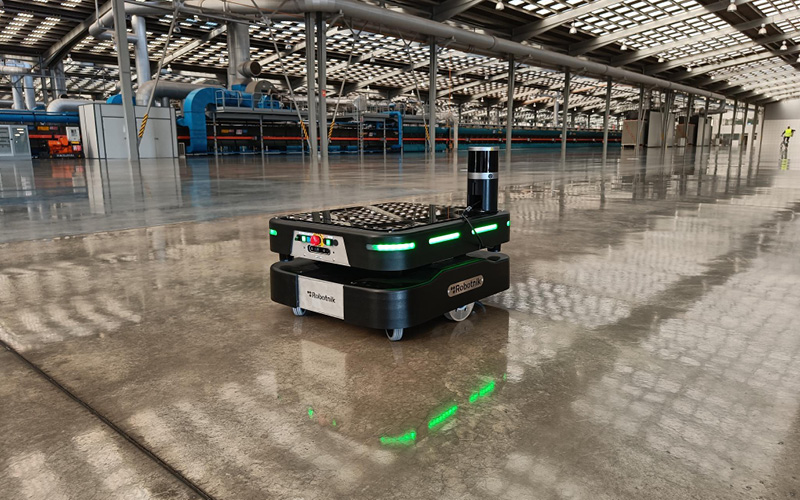Sensors for mobile robots are the devices that allow the robot to recognize the environment and interact with it in an efficient and safe way. In this article you can consult the list of the main sensors used in mobile robotics and their functions. Here you can read about what sensors are used for Industrial Mobile Robots.
WHAT SENSORS DOES A MOBILE ROBOT HAVE?
Sensors for mobile robots enable interaction with the environment, real-time decision-making and autonomous execution of tasks.
Robust localisation systems are necessary for AMRs to operate with true autonomy in dynamic, unstructured environments. Such environments, typical of factories, warehouses or similar logistics scenarios, require real-time environmental recognition to ensure movement, navigation and path planning based on the robot’s location.
One of the most advanced location sensors is LiDAR 3D (Light Detection and Ranging), a scanning, measuring and detection technology based on laser light pulses to detect objects and measure the distance to them. This allows the AMR (Autonomous Mobile Robot) to create a 3D map of the environment in real time and accurately locate itself on that map.
WHY DO MOBILE ROBOTS NEED SENSORS? EXAMPLE
A robust LiDAR-based 3D localisation system, such as the one integrated in the RB-THERON, means that the robot can avoid unexpected obstacles or optimize energy efficiency by selecting the shortest path when carrying out material transport tasks, for example.
Localisation, mapping and navigation algorithms in mobile robots have advanced significantly in recent years, improving the localisation accuracy that a robot requires to move autonomously between different positions or to plan routes. The accuracy for path planning increases according to the number of static points in the environment: the more reference points or landmarks there are, the more efficient the robot’s mapping is.
Accuracy is especially relevant in logistics environments for the efficiency and safety of operations.

5 TYPES OF SENSORS FOR MOBILE ROBOTS
- Proximity sensors: devices for detecting nearby objects without the need for physical contact with the robot. These sensors are very useful for obstacle avoidance and collision avoidance, key functions in autonomous navigation. One of the most advanced proximity sensors are the LiDAR sensors incorporated in Robotnik’s robots.
- Position sensors: encoder devices that allow the robot to know its position in a specific area. These are essential for autonomous navigation and route planning. GPS and odometry sensors are some examples of this type of sensors.
- Distance sensors: devices to measure the movement range between different reference positions. LiDAR and camera point cloud provide this capability.
- Image sensors: devices used by the robot to capture images of the environment. These sensors are useful for object detection, autonomous navigation and route planning. Some of the most common image sensors are cameras and laser scanners.
- Temperature sensors: devices that allow the robot to measure the ambient temperature. These sensors are useful for detecting fires, gases and other environmental irregularities. Robotnik integrates thermal cameras into its robots that fulfil this detection function in applications such as security and surveillance.
CONCLUSION
To conclude, sensors are key components for mobile robotics and play a fundamental role both for interaction with the environment and for autonomy. From position and navigation sensors to proximity and perception sensors, the advanced state of the art led to a significant improvement in their accuracy and reliability, allowing mobile robots to perform increasingly complex and sophisticated tasks, as shown in these Robotnik use cases.

